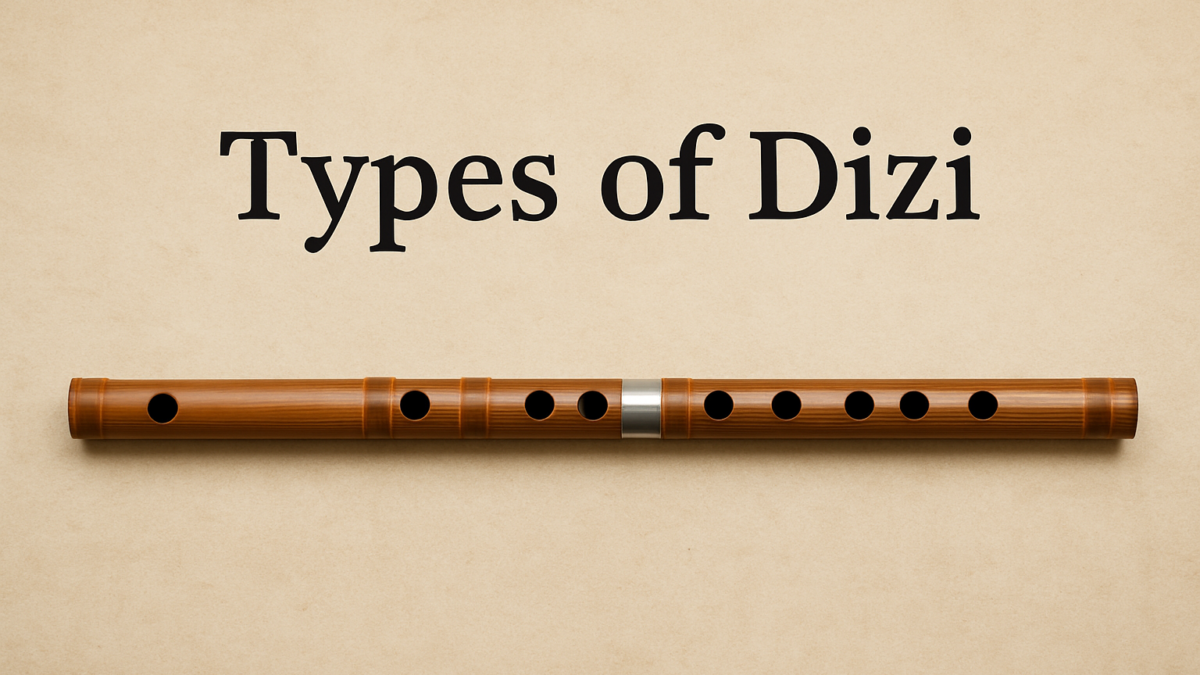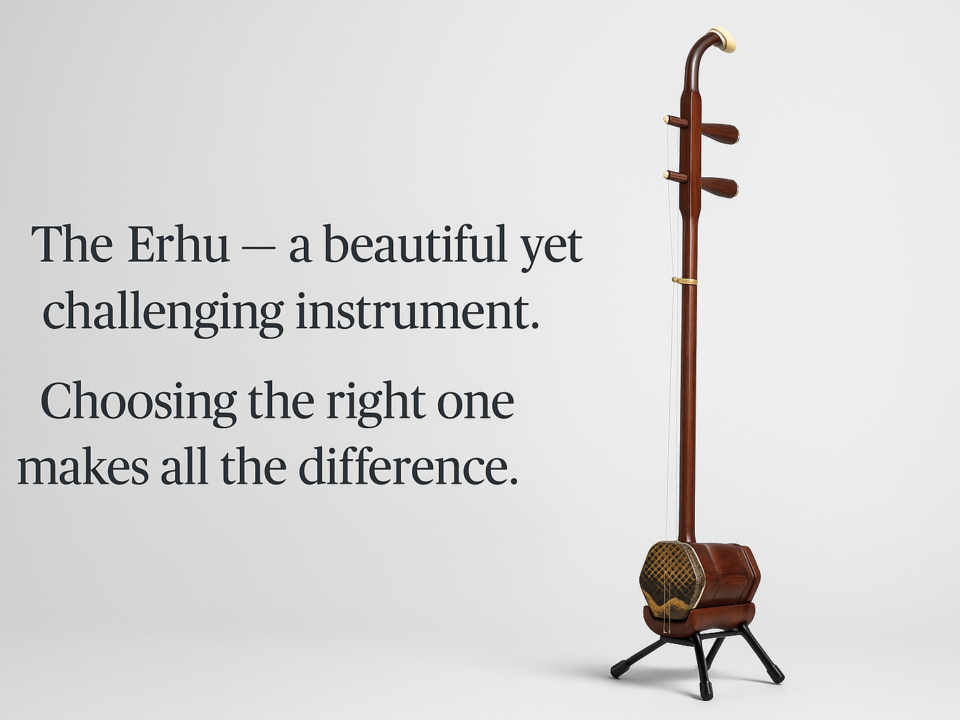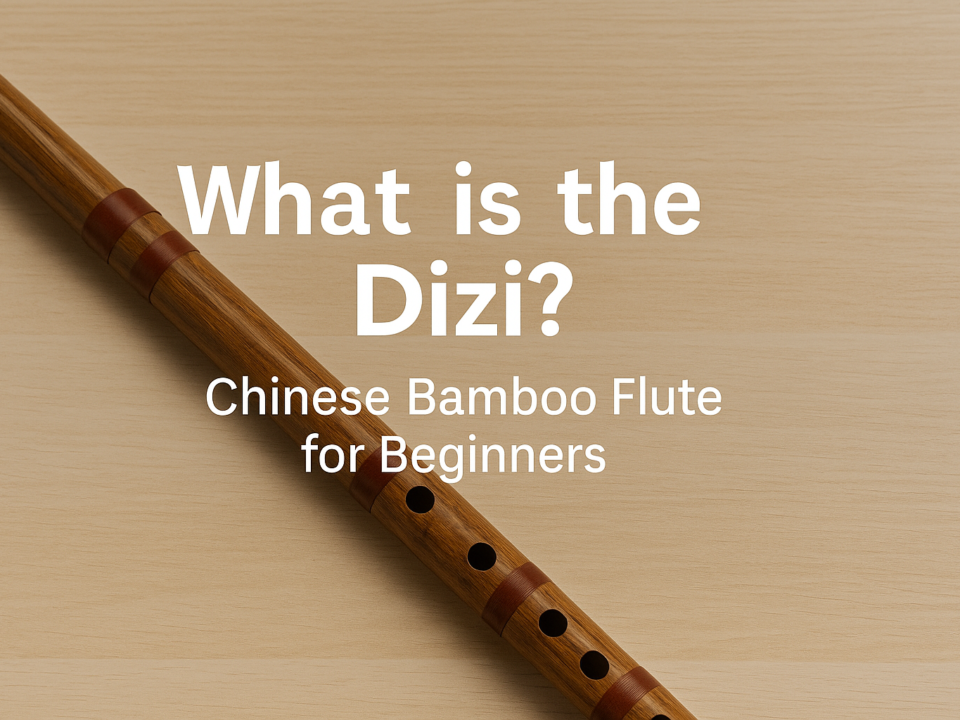Types of Sheng
October 9, 20152 Ways to Fine Tune Your Erhu
October 22, 2015Buy Dizi Online – Complete Guide to Types of Chinese Bamboo Flutes
If you’re thinking of learning the dizi—the traditional Chinese bamboo flute—you might’ve noticed something: there’s more than one! In fact, there’s a whole bamboo family reunion happening. Don’t worry, we’re here to demystify it for you so you don’t end up accidentally buying a koudi and wondering why your head hurts.
Bangdi (梆笛) – The High-Energy Northern Flute
The bangdi is the firecracker of the dizi family. Shorter, higher-pitched, and often used in Northern Chinese folk music, its sound is bright, lively, and a bit mischievous—kind of like a musical squirrel on espresso.
Common keys and specs:
- A Key: 44.5cm (Range: E4–A6)
- G Key: 48cm (Range: D4–G6)
- F Key: 52cm (Range: C4–F6)
Ideal for: Fast-paced, cheerful tunes and spirited solos.
Buy Bangdi online | Start Bangdi lessons
Qudi (曲笛) – The Poetic Southern Flute
If Bangdi is a firecracker, Qudi is a gentle breeze through cherry blossoms. With a lower pitch and a deeper, mellower tone, qudi is used in Southern Chinese music and opera. Think flowing melodies and expressive phrasing.
Common keys and specs:
- E Key: 56cm (Range: B3–E6)
- D Key: 60cm (Range: A3–D6)
- C Key: 67cm (Range: G3–C6)
Ideal for: Expressive solos, slow melodies, and dramatic pieces.
Buy Qudi online | Learn to play Qudi
Xiaodi (小笛) – The Soprano Star
Short, sharp, and sprightly—the xiaodi is the pocket rocket of the dizi family. It plays in the highest ranges, with a piercing, crystal-clear voice that often takes the lead in modern Chinese orchestras.
Common keys and specs:
- Bb Key: 42cm (Range: F4–Bb6)
- C Key: 39cm (Range: G4–C7)
- D Key: 36cm (Range: A4–D7)
Xindi / Dadi (新笛 / 大笛) – The Gentle Giants
The xindi and dadi are the bass-voiced bamboo flutes of the group. Longer in length and lower in pitch, they provide the deep, grounding tones in an ensemble. Think bamboo baritones.
Common keys and specs:
- Low Bb: 75cm (Range: F3–Bb6)
- Low A: 77.5cm (Range: E3–A5)
- Low G: 91.5cm (Range: D3–G5)
- Low F: 95cm (Range: C3–F5)
Koudi (口笛) – The Tiny Showstopper
Small but fierce, the koudi is just a few inches long and often has no finger holes. It’s played with the thumbs and produces incredibly high-pitched, bird-like tones. A specialty instrument, but definitely a crowd pleaser.
Common keys: D, G
So… Which Dizi Should You Buy?
If you’re a beginner, start simple: most traditional Chinese pieces are in the keys of D or G. So we recommend picking up a D key qudi or a G key bangdi as your first flute. These two will get you through a wide repertoire, and they’re the most commonly taught in Dizi lessons.
Already playing and want to expand your collection? Add a xiaodi or xindi to cover more ranges and musical expressions.
🎵 Shop our full range of Dizis | 🎓 Learn to play the Dizi
Frequently Asked Questions
What’s the difference between Bangdi and Qudi?
Bangdi is shorter and higher-pitched, great for fast and energetic music. Qudi is longer, lower-pitched, and better suited for slower, expressive melodies.
Which Dizi is best for beginners?
A D key Qudi or G key Bangdi is ideal for most students starting out, as they match the most commonly used keys in traditional Chinese repertoire.
Do I need to buy more than one Dizi?
If you’re just starting, one will do. But as you progress and perform in ensembles or diverse pieces, you may need multiple keys.
What materials are Dizis made of?
Most traditional Dizis are made of bamboo, but there are also options in PVC and rosewood. Bamboo is still the most authentic and preferred material.
Do you offer Dizi lessons?
Absolutely! We offer private Dizi lessons both in-person and online.
Ready to bring home your own Dizi? Shop authentic Chinese bamboo flutes from our trusted Dizi store today!





